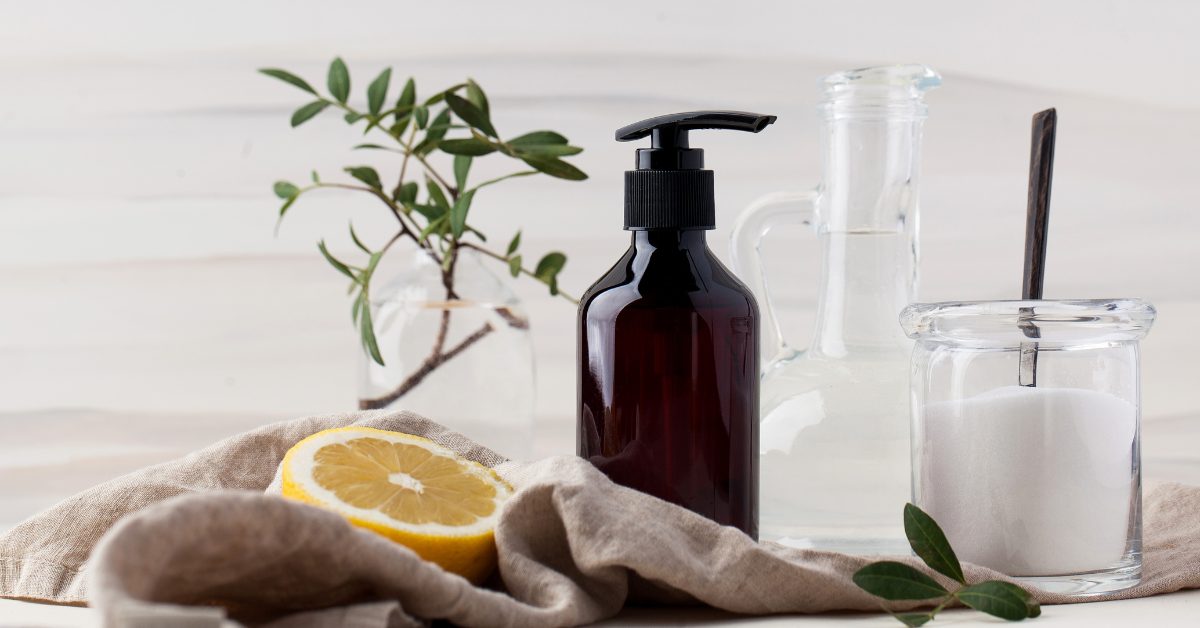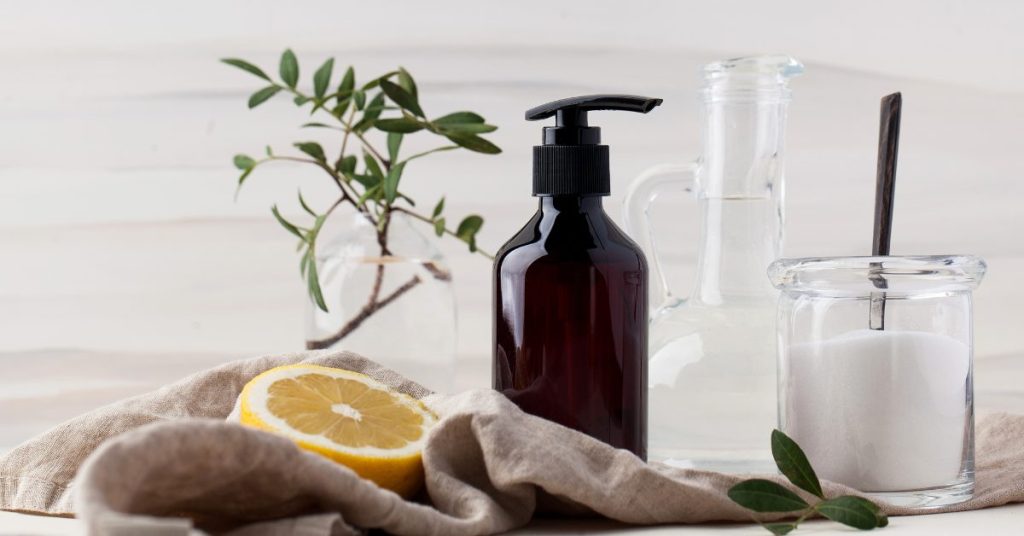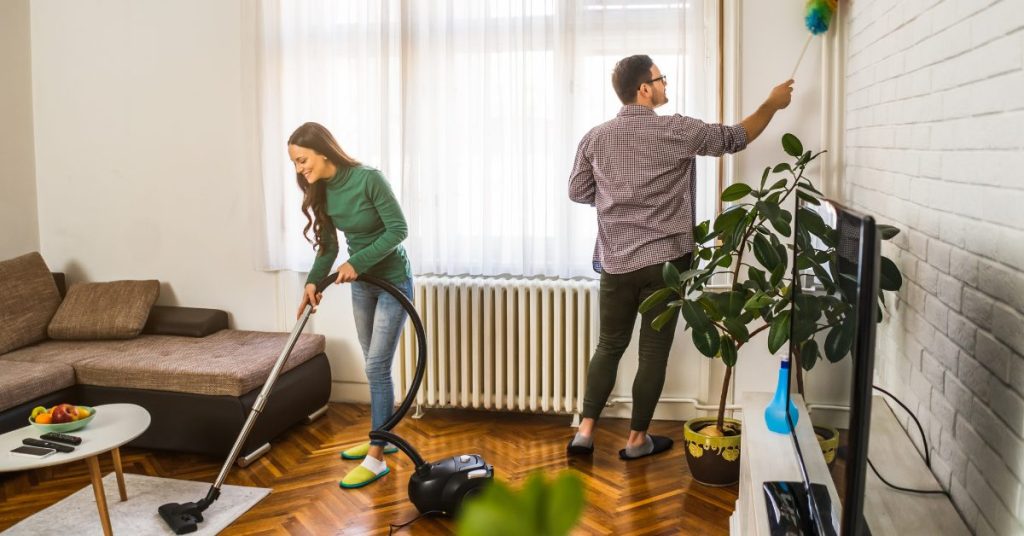Mold is not only ugly, its dangerous. It can cause health problems, damage your home, and waste your energy. Such a nasty deal.
Although you can’t eliminate it completely, you can keep things under control. We want to talk about how you can control mold in three easy steps, and keep your home healthy and clean.
1. How to Spot the Mold
Mold can be tricky to detect, as it often grows in hidden or hard-to-reach places.
It loves hanging out where there’s moisture and organic stuff. Think leaky spots, condensation, or places with poor airflow.
And the worst part? It’s a silent creeper, quietly causing chaos without you even noticing.
However, it leaves clues. Here are some of the signs of mold growth that you should definitely investigate further.
You May Notice a Stale, Musty Odor
Especially in damp or humid areas. Mold produces a distinctive smell that is unpleasant and persistent.
Your Health Issues May Take a Turn
Mold can trigger or aggravate respiratory problems, as well as cause other symptoms, such as coughing, sneezing, itching, or fatigue.
Watch Moisture Trouble Areas
Any water damage, condensation spots or high humidity areas create the perfect conditions for mold growth. So its worth inspecting these places often
Watch Out for Dark Stains
Mold can appear in various colors, such as black, green, white, or orange, depending on the type and the surface it grows on.
Your Wallpaper is Peeling or Bubbling
Wallpaper can trap moisture and provide a food source for mold, so you should remove it and inspect the wall underneath.
Your Pets are Acting Differently
If pets are scratching, licking, or sniffing more than usual, it could be a sign of mold. Pets are more sensitive to mold than humans, and they may try to alert you to its presence in your home.
2. How to Control Mold, The Green Way
Although mold is a stubborn enemy, you don’t need to use harsh chemicals to get rid of it. Let’s look at some solutions that are safe, effective, and eco-friendly.
We’ll kick things off with the more economical options. These items are either household staples or easily obtained.
Please remember: Before diving into these solutions, always conduct a patch test to ensure compatibility with the surface area.
Hydrogen Peroxide for The Most Powerful Punch
Hydrogen peroxide is effective at removing mold due to its strong oxidizing properties. When applied to moldy surfaces, hydrogen peroxide reacts with the mold, breaking down its cell walls and ultimately killing it. This oxidation process helps to eliminate mold spores and inhibit further growth.
Additionally, hydrogen peroxide is capable of penetrating porous materials, making it effective for treating mold on a variety of surfaces, including wood, drywall, and fabrics.
Furthermore, hydrogen peroxide is safe and environmentally friendly when used properly. It decomposes into water and oxygen, leaving behind no harmful residues.
To use hydrogen peroxide
Spray it on the moldy surface and let it sit for 10 minutes. Then, scrub the surface with a brush and wipe it off with a cloth.
Also Consider
- Hydrogen peroxide can act as a mild bleach, which may cause discoloration or fading on some surfaces, especially colored fabrics or porous materials. So be sure to test it on a small, inconspicuous area before applying it to larger surfaces.
- Concentrated hydrogen peroxide can irritate the skin, eyes, and respiratory system if not handled properly. Wear gloves and eye protection when using it and to make sure the area is properly ventilated!
- While hydrogen peroxide can penetrate porous materials to some extent, it may not reach deep into dense materials like wood or drywall. In such cases, more thorough remediation methods may be necessary.
- Hydrogen peroxide can degrade over time, especially when exposed to light or heat. It’s essential to store it properly in a cool, dark place and to check the expiration date before use.
Vinegar Can Kill 82% Of Mold Species.
Its ability to kill mold stems from its acidic nature, primarily due to the presence of acetic acid. Mold thrives in environments with a neutral pH, but vinegar’s acidity disrupts its growth and ultimately kills it.
Additionally, vinegar’s high acidity helps to break down the mold’s cellular structure, making it an effective cleaning agent for removing mold from surfaces.
To use Vinegar
Spray vinegar on the moldy surface and let it sit for an hour. Then, wipe the surface with a damp cloth and dry it well.
Also consider
- It Smells – Vinegar has a strong smell that some people find unpleasant. This odor can linger in the air and on surfaces even after cleaning.
- Be careful with Certain Surfaces – Vinegar is acidic, which means it can potentially damage certain surfaces such as marble, granite, or some types of grout. It’s essential to test vinegar on a small, inconspicuous area before using it on sensitive surfaces.
- It’s Not That Effective on Porous Surfaces – Vinegar may not penetrate deeply into porous materials like wood or drywall, making it less effective at killing mold in these areas.
- It Could Cause Irritation – While generally safe to use, vinegar can cause eye and skin irritation in some people, especially if used in concentrated form. It’s essential to handle with care and to dilute properly before use.
Baking Soda Is A Mild Mold Remover
Baking soda’s ability to absorb moisture helps create an environment less conducive to mold growth, as mold thrives in damp conditions. Its slightly alkaline nature disrupts the pH balance necessary for mold to proliferate.
Additionally, the fine, abrasive texture of baking soda aids in physically scrubbing away mold from surfaces when combined with water or a cleaning solution. Its natural deodorizing properties can neutralize the unpleasant odors often associated with mold.
To use baking soda
Mix it with water to make a paste and apply it to the moldy surface. Let it dry and then scrub it off with a brush. Rinse the surface with water and dry it well.
Also Consider
- It may not be as potent as commercial mold removal products for severe infestations.
- Baking soda typically requires physical scrubbing to remove mold effectively. Removing mold with baking soda can be time-consuming, especially for larger areas or stubborn mold growth.
- It will leave behind a white residue on surfaces, which may require additional cleaning to remove completely. The abrasive texture of baking soda may not be suitable for all surfaces and could cause scratching or damage if used improperly.
Essential oils are a popular holistic alternative. Yet, given their price, essential oils might only be worth considering for smaller mold problems.
Tea Tree Oil As A Natural Antiseptic And Fungicide
When applied to surfaces contaminated with mold, tea tree oil can disrupt the cell membranes of mold spores, ultimately killing them. Additionally, tea tree oil has been found to inhibit the growth of mold by disrupting its cellular processes.
Its natural composition makes it a safer alternative to harsh chemical cleaners, especially in environments where individuals may have sensitivities or allergies to traditional cleaning products.
It’s essential to dilute tea tree oil properly and use it in well-ventilated areas, as its strong aroma can be overpowering in concentrated form.
To Use Tea Tree oil
Mix 2 teaspoons of tea tree oil with with 2 cups water and one teaspoon of white vinegar. Add to a spay bottle, and apply this mixture to the moldy surface. Let it sit for a few hours or overnight and then wipe it off with a cloth.
Also Consider
- Tea tree oil has a strong, medicinal odor – Some people find this unpleasant. It can linger in the air and on surfaces after use.
- The oil oil is potent and can cause allergic reactions – Especially if used undiluted or in high concentrations. It’s essential to perform a patch test before using tea tree oil directly on skin or surfaces.
- It may take time and multiple applications to completely eradicate mold especially for severe infestations.
Citrus Seed Extract is a Broad Spectrum Solution
Citrus seed extract is a natural mold remover that does not have any smell or color. It is also a natural preservative and antioxidant.
Compounds like limonoids and flavonoids disrupt the cell membranes of mold spores, killing them and inhibiting further growth. Its broad-spectrum action also helps sanitize surfaces, preventing the spread of mold and other microorganisms.
It is biodegradable and environmentally friendly, making it a safe alternative to harsh chemicals.
To Use Citrus Seed Extract
Mix 20 drops of citrus seed extract oil per 1 cup (240 mL) of water and spray it on the moldy surface. Let it dry and then wipe it off with a cloth.
Also Consider
- Some individuals may experience skin irritation or allergic reactions when in contact with undiluted citrus seed extract. It’s essential to test the solution on a small area of skin before using it extensively and to dilute it properly according to the manufacturer’s instructions.
- Citrus seed extract has a strong citrus scent that may linger after use. While some people find this scent pleasant, others may find it overpowering or undesirable.
- This extract may not be suitable for all surfaces, especially those that are sensitive to acidic substances. It’s essential to test the solution on a small, inconspicuous area before using it on delicate surfaces.
Targeted Tactics – Control Mold in Specific Areas
Depending on where the mold is in your home, you may need to take some extra steps to prevent it from returning. For example:
Mold in the Bathroom
Increase ventilation by using an exhaust fan or opening a window during and after showering to reduce humidity. You can also use a squeegee or a towel to wipe down wet surfaces after showering.
Mold in the Basement
We recommend consulting a professional mold control specialist to assess and address the situation. Basements are often dark, damp, and poorly ventilated, which makes them ideal for mold growth.
A professional can help you find and fix the source of moisture, clean and disinfect the area, and install proper insulation and ventilation.
3. Prevent Mold from Coming Back
Although you can’t really prevent mold, you can stop it from taking over your home
Your Main Line Of Defense: Use Mold-Resistant Building Solutions
Fight the problem by using the right building materials to build or repair your home. When you opt for materials that stand up to mold and moisture, you’re building a fortress against mold invasion, keeping your home and your health in top shape.
MagPanel MgO board is a revolutionary building material that has many advantages over the conventional ones.
Made of magnesium oxide, a natural mineral that has antimicrobial properties. It can resist mold, mildew, fungus, and rot, even in the most humid and wet conditions. Unlike plywood, OSB, fiber cement, and gypsum board, which can absorb moisture and provide a food source for mold, MagPanel MgO board keeps your home dry and clean.
MagPanel MgO board does not absorb water or swell when wet. It can withstand exposure to water and humidity without losing its strength or shape. It can also prevent moisture from penetrating into the wall cavity and causing damage.
Keep Humidity Low
Mold loves moisture, so you need to keep your home dry and fresh. Keep humidity levels below 50% by using air conditioners, dehumidifiers, and proper ventilation.
Fix Leaks And Moisture Issues
Leaks and moisture issues can create the perfect conditions for mold growth. The CDC advises repairing any leaks in your roof, walls, or plumbing as soon as possible1.
Clean And Dust Regularly
Mold spores can accumulate in your home if you don’t clean and dust regularly. Use a vacuum cleaner with a HEPA filter and a damp cloth to remove dust and dirt from your surfaces. Explore ways to make home cleaning more eco-friendly.
Ensure Good Ventilation
Good ventilation can help reduce moisture and improve air quality in your home. Use exhaust fans in the kitchen and bathroom, and vent your clothes dryer outside.
Keep Everything Dry
Wet materials, such as carpets, upholstery, and fabrics, can harbor mold if they are not dried quickly. Remove or replace them as soon as possible to prevent mold growth.
Use Mold Inhibitors
Mold inhibitors are substances that can help prevent mold growth. You can add them to paints before painting to help protect your walls and ceilings from mold.
Look for inhibitors that are zero VOC, non-toxic, and utilize natural ingredients such as hydrated lime or citrus seed extract, making them environmentally friendly and safe for use in various applications
Perform Routine Maintenance
Routine maintenance can help prevent water damage and mold growth. Regularly check and maintain your appliances, roofs, and plumbing to avoid leaks and moisture problems
Control mold in your home with eco-friendly strategies. By proactively preventing and utilizing safe removal methods, you’ll create a mold-free living environment for you and your family.

Marzanne is our eco-enthusiast with an unwavering love for all things green! 🌱 As a self-proclaimed “green queen” and a DIY aficionado, her zeal for eco-conscious living shines through in every aspect of her life. ♻️
Join Marzanne as she shares her quirky, eco-infused adventures, offering tips, tricks, and a sprinkle of good-natured humor on integrating sustainable products, green design, and eco-friendly living into your home. She’s the green-spirited friend you never knew you were missing! 🌿🏡😄



